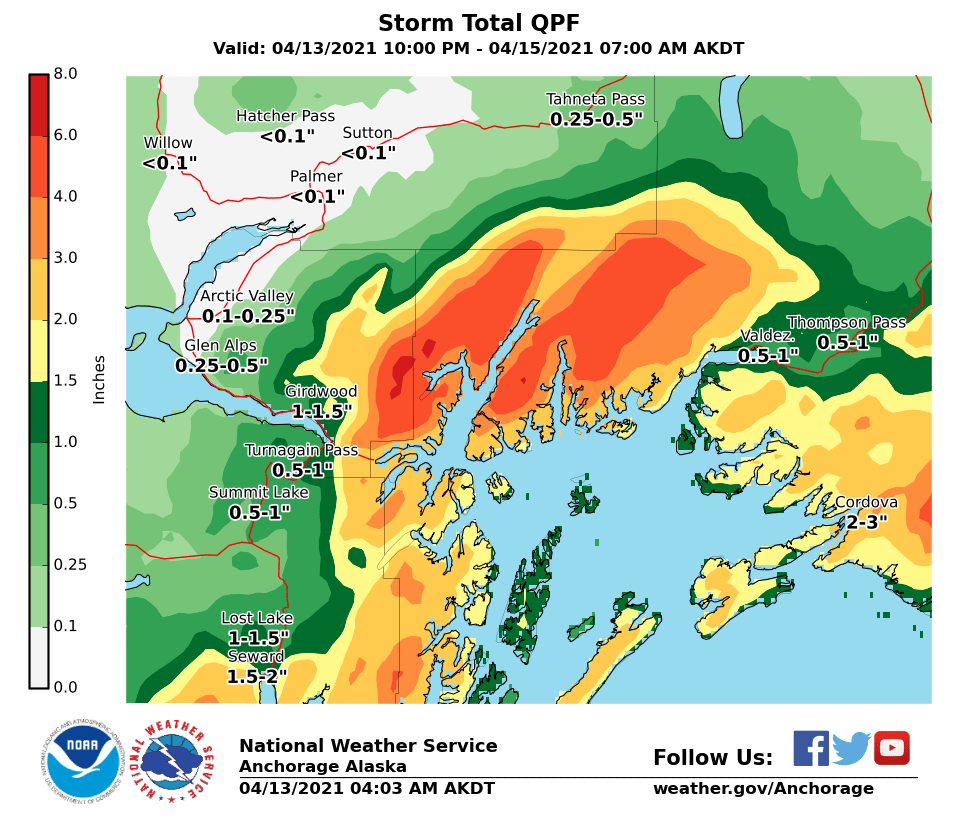Turnagain Pass
|
|
Avalanche Warning
Issued: April 14, 2021 6:00 amTravel in avalanche terrain is not recommended. Avoid being on or beneath all steep slopes. |
We have issued a BACKCOUNTRY AVALANCHE WARNING through the National Weather Service for the Turnagain Pass area and surrounding mountains.
Heavy snowfall, rain, and strong winds have created a HIGH avalanche danger in the mountains surrounding Girdwood Valley, Turnagain Pass, Portage Valley, and areas on the Kenai including Summit Lake and the Seward zone. Dangerous avalanche conditions are expected on all slopes 30° and steeper. Avalanches are expected to release naturally, be easily triggered by people and send debris to valley floors. Travel in avalanche terrain is NOT recommended– including runout zones. Areas with steep slopes above should be avoided, such as the Byron Glacier Trail and other summer trails that pass under avalanche terrain.
*Roof Avalanches: Warming temperatures and rain will cause roofs to continue to shed their snow. Pay special attention to children, pets and where you park your car.
From Alaska Department of Transportation and Public Facilities: There will be intermittent traffic delays for avalanche hazard reduction today, April 14, 2021 on the Seward Highway from mile post 45 to mile post 37. Summit Lake to the Wye. Motorists should expect delays of 45 minutes from 11:00 am to 3:00 pm. Updates will be posted on the 511 system. http://511.alaska.gov/
CNFAIC End Of Season Operations: Daily avalanche forecasts will continue through this weekend due to the weather forecast and elevated avalanche danger. We plan on switching to 4 days/week (Tues, Thur, Sat, Sun) beginning the Tuesday the 20th as our forecast season and funding winds down.




